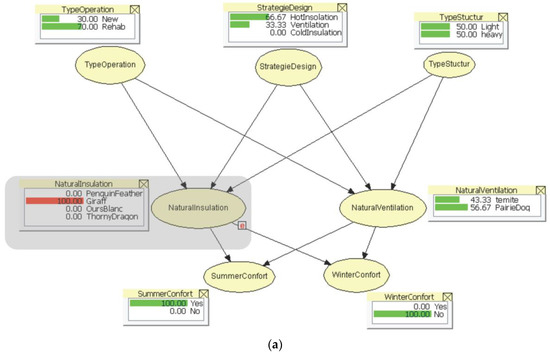

The Case Generator Tutorial explains how to generate simulated cases from a Bayesian network. The Adaptation Tutorial explains how the probabilities specified for Bayesian networks can be automatically updated from experience (i.e., evidence) such that, for example, the networks adapt to changing conditions its environment. The EM Learning Tutorial describes how the probabilities (parameters) of Bayesian networks can be learned automatically from data. The Structure Learning Tutorial describes how Bayesian networks can be constructed automatically from data. Objectives: This project would create data driven and knowledge enhanced Bayesian Network models that are able. The Case and Data File Formats Tutorial describes how data for learning may be specified as case and data files. Host institution: HUGIN Duration 36 Months.

The Table Generator Tutorial shows how to specify simple expressions for large tables and then let the built-in table generator do all the hard work of filling in the numbers of the table. The Node Table Tutorial explains the functionalities of node tables. The How to Build OOBNs Tutorial provides a step-by-step guide to constructing an object-oriented Bayesian network using the HUGIN Graphical User Interface. The Object Orientation Tutorial describes the basic properties of object-oriented Bayesian networks and LIMIDs, and is recommended if you have no or little prior knowledge about this subject. The How to Build LIMIDs Tutorial provides a step-by-step guide to constructing a LIMID using the HUGIN Graphical User Interface. The Limited Memory Influence Diagrams Tutorial describes the basic properties of limited memory influence diagrams, and is recommended if you have no or little prior knowledge about limited memory influence diagrams (LIMIDs). The How to Build BNs Tutorial provides a step-by-step guide to constructing a Bayesian network using the HUGIN Graphical User Interface. The Bayesian Networks Tutorial describes the basic properties of Bayesian networks, and is recommended if you have no or little prior knowledge about Bayesian networks. The Paradigms Tutorial presents the three main paradigms for expert systems: Rule-based systems, Neural networks, and Bayesian networks. There is one section of tutorials that introduce some basic concepts, and another that presents some more advanced features of the HUGIN Graphical User Interface. Wermuth, N., Lauritzen, S.L.: Graphical and recursive models for contingency tables.A number of tutorials are provided to help you getting acquainted with the HUGIN technology and with the HUGIN Graphical User Interface. Verma, T., Pearl, J.: An Algorithm for Deciding if a Set of Observed Independencies Has a Causal Explanation. 2nd Workshop ”Data Mining und Data Warehousing als Grundlage moderner enscheidungsunterstuetzender Systeme” (1999) Steck, H., Tresp, V.: Bayesian belief networks for data mining. In: Adaptive Computation and Machine Learning, 2nd edn. Spirtes, P., Glymour, C., Scheines, R.: Causation, Prediction, and Search. Spirtes, P., Glymour, C.: An algorithm for fast recovery of sparse causal graphs. Spiegelhalter, D., Lauritzen, S.L.: Sequential updating of conditional probabilities on directed graphical structures. Cambridge University Press, Cambridge (2000) Morgan Kaufmann Publishers, San Francisco (1988) Pearl, J.: Probabilistic Reasoning in Intelligence Systems. Meek, C.: Causal inference and causal explanation with background knowledge. Lauritzen, S.L.: The EM algorithm for graphical association models with missing data. In: First European Workshop on Probabilistic Graphical Models, pp. Jensen, F., Kjærulff, U.B., Lang, M., Madsen, A.L.: HUGIN - The Tool for Bayesian Networks and Influence Diagrams. Heckerman, D.: A tutorial on learning Bayesian networks. Networks 20(5), 507–534 (1990) Special Issue on Influence Diagrams Geiger, D., Verma, T., Pearl, J.: Identifying independence in Bayesian networks. 247–256 (1989)Ĭowell, R.G., Dawid, A.P., Lauritzen, S.L., Spiegelhalter, D.J.: Probabilistic Networks and Expert Systems.

of the Second European Conference on Artificial Intelligence in Medicine, pp. 1080–1085 (1989)īeinlich, I.A., Suermondt, H.J., Chavez, R.M., Cooper, G.F.: The ALARM monitoring system: A case study with two probabilistic inference techniques for belief networks. Andersen, S.K., Olesen, K.G., Jensen, F.V., Jensen, F.: HUGIN - a Shell for Building Bayesian Belief Universes for Expert Systems. Bayesian networks have the advantage of being able to properly address uncertainties related to data, by providing a unified framework to allow the input of very different data (such as expert.


 0 kommentar(er)
0 kommentar(er)
